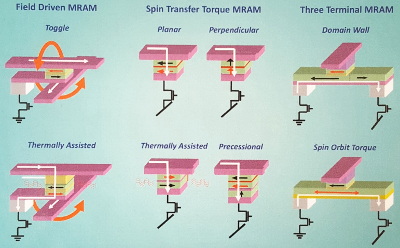 B. Dieny, R. B. Goldfarb, K.-J. Lee (Eds), IEEE Press, Wiley (2017).
B. Dieny, R. B. Goldfarb, K.-J. Lee (Eds), IEEE Press, Wiley (2017).
With chapter authorship from Spintec: L. Buda-Prejbeanu, L. Prejbeanu, B. Diény.
Magnetic random-access memory (MRAM) is poised to replace traditional computer memory based on complementary metal-oxide semiconductors (CMOS). MRAM will surpass all other types of memory devices in terms of nonvolatility, low energy dissipation, fast switching speed, radiation hardness, and durability. Although toggle-MRAM is currently a commercial product, it is clear that future developments in MRAM will be based on spin-transfer torque, which makes use of electrons’ spin angular momentum instead of their charge. MRAM will require an amalgamation of magnetics and microelectronics technologies. However, researchers and developers in magnetics and in microelectronics attend different technical conferences, publish in different journals, use different tools, and have different backgrounds in condensed-matter physics, electrical engineering, and materials science.
Chapters
- Basic Spintronic Transport Phenomena, N. Locatelli, V. Cros
- Magnetic Properties of Materials for MRAM, S. Yuasa
- Micromagnetism Applied to Magnetic Nanostructures, L. Buda-Prejbeanu
- Magnetization Dynamics, W. E. Bailey
- Magnetic Random-Access Memory, B. Diény, I.L. Prejbeanu
- Magnetic Back-End Technology, M.C. Gaidis
- Beyond MRAM Nonvolatile Logic-in-Memory VLSI, T. Hanyu, T. Endoh, S. Ikeda, T. Sugibayashi, N. Kasai, D. Suzuki, M. Natsui, H. Koike, and H. Ohno




